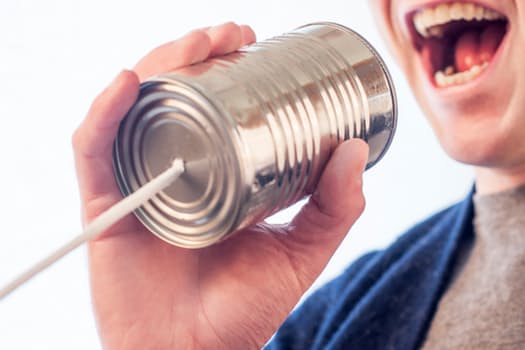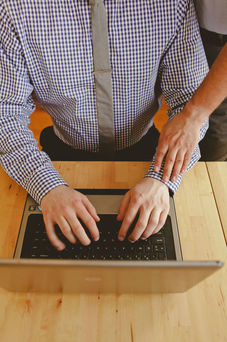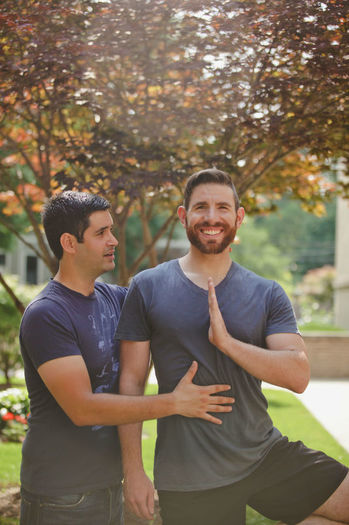|
Nope. Whew, that's a relief. Now let's get into some specifics as to why. Mindfulness is a buzzword craze that has turned into a multi-billion dollar industry worldwide. The basic idea is that we spend most of our life being unmindful of what we are doing and automatically going through our day, and if we are able to be fully present we will have more joy, health, and well-being. There are some valid points here--most of us rely on habits to carry out the many complicated, coordinated activities we go through on a daily basis, and with the prevalence of technology, it is easier than ever to coast through your day without engaging in much internal or external life. However, the flip side of the coin is what I am going to call 'competitive presence'. We notice the time we aren't being present and beat ourselves up for it. We post selfies of us meditating and doing yoga and articles about the possibility of 'what if we were present in everything we do'. This creates an expectation that we 'should' be present and are doing something wrong by not being in this state. This can lead you to a lot of effort and you end up being like this guy: Not too blissful, is he?
Part of the problem is being fully present all of the time isn't possible, and the other part is that it isn't really desirable. Let's science it, shall we? One of the most interesting books I have ever read is 'Thinking Fast and Slow' by Nobel laureate Daniel Kahneman. In it, he discusses the relationship between 2 sides of our brain--the fast, unconscious , and habitual part and the slow, conscious, choice driven part (the reality is much more complicated and interconnected than this, which Kahneman acknowledges, but he uses it as a simple way to accurately characterize a complex thing). One of the central themes of the book is that the conscious part of our brain takes a tremendous amount of energy to engage, and therefore we use our unconscious brains in order to operate efficiently. The conscious brain is so energy consuming, in fact, that using it constantly is extremely uncomfortable and tiring; and once it quickly wears out we actually tend to have no willpower left and end up going deeper into unconsciousness than before. So, because of the finite nature of the conscious mind, it is not possible to always be present; because of its discomfort it is not desirable. So yes, take the pressure to be overly present off of yourself. Now for the good news. I do think that it is possible to improve the efficiency of engaging our conscious minds through practices like meditation and **cough cough** Alexander Technique. By repeatedly catching moments when we are not conscious when we want to be and practicing engaging our conscious minds at these moments (I call it 'practicing the pause'), we engage our choice and are able to resist being drawn into our unconscious at crucial moments. What's more, I believe that over time enough of these overrides end up creating new habits--there is research in 'Thinking Fast and Slow' that suggests the conscious mind has an ability to form new habits over a period of time. However, if you do too much, you use all of our willpower (which is finite no matter how much you train it) and you don't end up applying the work with the consistency to make real change. If you apply momentary 'taps of consciousness', I believe this is what allows the possibility of entering a flow state, an optimal balance between the conscious and the unconscious mind (which also is not ultimately sustainable and will fade, as do all things). When I work with students, one of the things I tell them in the first lesson is not to over do it. If you try to be conscious of your movement habits all of the time, you will drive yourself crazy and not want to do it anymore (or perhaps turn into what one my teachers called an 'Alexandroid'). But if you pay attention at key points, for a series of small moments, or perhaps 5 minutes a day, people are surprised at how little work can create major change, and how much more present they will feel in their own body. Perhaps this is the ultimate goal, not to be present all the time, but to always be able to be present when you choose to be.
0 Comments
7/6/2017 0 Comments Better Self-TalkWhen you talk to yourself, what voice do you use?
This is something that comes up in lessons frequently. One of the central ideas of the Alexander Technique is that of Direction--how the way we think about our body activates habits that shape the way we move. Making this thinking more conscious can substitute positive movement for movement that works against us. Alexander teachers specifically craft the phrasing of these directions--from the traditional ('allow the neck to be free') to negative direction (allow the neck to unclench) to Freedom Directions (my neck is free to be relaxed). The words we use do affect us, but there is more to it than that. Lately I've been more focused on the tone students take with themselves with their inner-voice. I often go through a phase with a student where they are forceful with themselves--like they are trying to order their neck into freedom. This invariably results in more tension. Slowly, a student learns how to make their thinking lighter and gentler, and as such they stop trying to manipulate their body as if it is a tool that is separate from themselves but to speak to themselves kindly as if affirming a state of being, rather than judging or trying to change. This is a profound shift that subtly unwinds habits and gives us the space to grow. The applications of this to life are boundless. Though I am not an advocate of being sunny with yourself all the time (you have to be honest, and the pressure to be constantly positive can block the release of feelings that are important to let go of), it seems clear that when you speak against yourself inside your head it only stimulates you to do more of what you have been already doing. Forceful self-criticism tends to make us less likely to take risks, which makes change impossible. This has been particularly apparent in my work with artists--many of us get so focused on our craft we stifle our inner artist under a mountain of self-monitoring and 'shoulds'. I find that when giving universal positive regard while simultaneously being honest with who I am coaching--giving accurate feedback but nurturing a positive tone for the artist to take in their growth--the effect is that they stop associating self-knowledge with criticism and start to associate it with opportunity, and their inner-artist feels safe to come out and to do the work for them. Think of how you approach a goal in your life: posture, weight loss, a promotion, an athletic goal. How do you talk to yourself about it? Are you whipping yourself towards it like you are your own enemy, separating yourself out, or are you speaking to yourself positively and nurturingly? As much as Americans tend to have an aggressive stance to self improvement, you might find that better self talk will allow you to change faster and for the better. A BALM FOR BACK PAIN
Recently, Lazlo Block, SVP, head of People Operations at google (also known as HR) recommended the Alexander Technique for desk bound back pain. There are a couple of reasons for this: 1. Muscoloskeletal disorders (strains, sprains, and pains) account for 29% of days missed in the workplace for injury or illness according to spine-health.com--nearly a third of all days taken for this reason. Lower back injuries represent a large segment of these. The loss in productivity from these days missed is obvious. Alexander Technique is clinically supported to make significant improvements in back and neck pain management, and could restore much of this lost work time. These numbers don't include occupational injuries in jobs that require physical strain that might be prevented with Alexander Technique work. 2. We spend over 50 billion dollars annually on back pain treatment according to the American Chiropractic Association. The potential cost to employers speaks for itself. 3. Because the Alexander Technique focuses on prevention, it will not only help people with active issues but may keep others from developing problems. It also is cost effective and efficient: other problems such as carpel tunnel and shoulder pain might be cleared up in the process; and just 6 one-on-one Alexander lessons can be effective--a steal in comparison to physical therapy or medication. POSITIVE SIDE EFFECTS In addition to the benefits for back pain, there are other fringe benefits to having an A.T. educated workplace: 1. Stress Management--Alexander Technique sessions can be deeply relaxing, and equip students to handle and release tension as it comes up, helping workers under stressful conditions and preventing problems and errors. 2. Process Oriented--Alexander work asks students to be aware of their habits and gives them a framework for changing them, a process that can be applied to mental and workplace habits as well. It also asks students to focus on the quality of process--what A.T. Teachers call the 'means-whereby'-- rather than the result, which has the effect of learning to 'keep your eye on the ball'. 3. Communication Skills--Alexander Technique can be wonderful for working on presentation and communication skills: the body and breath have a tremendous impact on our ability to effectively convey meaning. How Can I Get an Alexander Teacher to Come Work with my People? 1. Host a Workshop/Intensive: Though not as effective as one-on-one lessons, a workshop can give your staff the basics and give useful workplace tips. Workshops can be adjusted and targeted to meet your most urgent needs. An intensive or workshop series gives an even more of a chance for the training to transform your office. 2. Host Lessons at your Workplace: If you have the space, consider having a teacher set up in a conference room for the day to do one-on-one sessions with workers and help them with their specific needs. One could also offer a limited number of recurring lesson slots for workers in need and help them to change over time. 3. Subsidize Lessons: At present, U.S. insurance does not cover Alexander lessons despite the scientific evidence and cost-efficiency that led the UK's National Health Service to adopt it. As an alternative, consider giving a subsidy to help workers who want to take a basic 6-lesson series to help them to be affordable. If you research chronic back pain on the internet, you will find hundreds if not thousands of potential solutions. Everything from heating pads, to pain shots, to 'posture devices', to crystals and sound therapy claim to help relieve or even cure chronic back pain. With all of these potential solutions available, it can be hard to see why back pain is still the leading cause of disability in people under 45 in America (2.4 million Americans are on disability for it total), why it is the number two reason people visit their doctor, or why it effects 8 out of 10 people in their lifetime. Additionally, we spend over 50 billion dollars a year on treatments*. Surely, if all these solutions work, it wouldn't be such a problem.
The blunt truth is that most of these methods don't work consistently for chronic pain--even conventionally accepted medical treatments such as some physical therapy regimens or even surgeries. Additionally, many of these therapies are aimed at treating pain (aka the symptom of a problem) rather than the cause of the issue or preventing future problems. And most of these methods have limited or no scientific support. The Alexander Technique does, and this the thing that sets it apart from the noise.
This is a small cross section of the body of research that has been conducted on the effectiveness of A.T. for back pain. Systematic peer review rates the evidence that A.T. is effective for back pain as 'Strong'. What is even more remarkable is how low risk lessons are--many back pain interventions carry significant risk of injury or side effects (consider the epidemic of opoid addiction from prescriptions meant to curb back pain or the risk of surgery). A.T. has no significant risk as a method of handling back injury and is essentially safe. There is still much research to be done into the process and effects of A.T., but you can enter into sessions with a certified teacher confidently knowing that it is not just mumbo-jumbo: the effectiveness of this method is well documented, and it is time for it to take a more central roll in treatment than unsupported or ineffective alternatives. *statistics taken from the Mayo Clinic and American Chiropractic Association. There is an interesting phenomenon sweeping the classrooms of America (and the argument section of Facebook*. A toy called the Fidget Spinner claims to help kids with ADHD, ADD, Anxiety, and even Autism concentrate and behave in school. They are loved by some kids and parents, hated by some teachers, reviled by middle aged columnists, and in my opinion a palliative way of relieving symptoms of a larger issue: sedentary education.
One shift most of my Alexander Technique students have to make is that the body is not meant to be stiff or still for long periods of time (such as when typing on a computer or even lying on a couch) but is built for being a little unstable and dynamic--this is the shift from the idea of 'posture' to the idea of 'poise'. Young children are never still unless they are passed out. They are always moving, always shifting, always curious. Until they hit school. At which point, in order to provide discipline and concentration on mental pursuits, they are constrained to stillness for hours on end with small breaks for physical activity and interaction (something that carries over to many of our working lives). As detailed in Daniel Kahnman's 'Thinking Fast And Slow' this type of concentration is very taxing on both brain and body, and the whole system craves movement to balance it out and break up patterns of tension that come into the body as a result. Instead, children are forced to sit still. Is it a wonder they crave some form of movement, even as small as the motion of a finger spinner? With some reflection, it is easy to see that that this is the latest manifestation of a long lasting tradition of ways to fight this repressive stillness--when I was in school, I would doodle constantly (at some point, I threw way whole notebooks of X-Wings and Tie Fighters) or lightly drum my fingers on my desk, which would drive my teachers crazy much like the spinners do now. There is a lot to this. I am certainly not claiming that any of the above conditions are caused by this method of education (or denying their existence), but I do think they are exacerbated by it along with causing potential physical issues such as back and shoulder pain. One of the joys of my work with adults is watching them wake up mentally, emotionally, and energetically as we introduce ways to incorporate more movement and physical ease into their lives; and there is a lot of thought that movement actually aids mental activity rather than constraining it. Along with the wonderful benefits of education (I am the son of a teacher) many people carry the harmful habits of over-stiffening and over concentrating through to adulthood. Perhaps rather than arguing about whether a toy is either the savior or downfall of western society, we should be examining the accepted social structure that makes it an issue in the first place and finding ways to make it more in line with the best way to Use ourselves. And now for the most terrifying words on the internet: what do you think? *Also known as Facebook. Your eyes have a surprising amount to do with the level of tension in your body. Follow these simple body hacks to get a little relaxation at your desk or with whatever you are doing.
1. Focus Less--How hard are you focusing your eyes to read this right now? You might be surprised to find that the answer is quite intensely. If you think of relaxing your eyes a little bit, tension will drain out of your neck. This is because of strong neurological connections between your eyes and your neck--the postural muscles of the neck tighten to orient to wherever the eyes are looking. If you are over-focusing (as is very common when looking at computers or smart phones) you might be putting stiffness in your neck that will make sitting for several hours at the computer that much harder (this is why bright colors can also be aggravating)! An additional affect of this is that it slowly leads our head forward off our spine, causing us to collapse. If you are attentive to keeping your head on your spine, you might have more success in avoiding your workday slump! 2. Focus More--Are you daydreaming while you are reading this? What happens with your eyes when you are in your internal world? For most of us, we find that they have become unfocused or glazed over. With this, there is a good chance that if you 'zoom out' and pay attention to your whole spine, it has collapsed a bit. This is because the lack of focus takes the tension necessary for good poise out of our neck. Over time, this slump makes us feel fatigued or gives us tightness and pain because our spine doesn't have the shape to support us. It's about balance--not too much focus, and not too little. 3. Crazy Eyes--When we go into problem solving mode, our pupils dilate, our eyes engage, and our neck tenses. If you do this for too long it literally locks our body up--this is part of why we characterize it as 'thinking hard'. If you are prone to anxious thought, your brain switches from thought to thought quickly--this registers as small, highly engaged back and forth moments with our eyes. This quick effortful switch speeds up our breathing pattern and deepens feeling of panic that might already exist. A good antidote to this is a classic meditative technique--light a candle, and have a soft focus on it with your eyes. The gentle focus it evokes helps to keep your brain from flitting from thought to thought without over-concentrating. Try it next time you have an anxious moment (you can also use other focuses such as a picture of nature or art and lightly concentrate on it instead). 4. Eyes Lead, Body Follows--Because of the way the postural muscles orient from the eyes if you turn your eyes slightly before your head your body will be primed for the movement. Try a simple experiment--look to the right with your eyes, but don't move your head. You will feel a pull from the postural muscles leading you to that side just from moving your eyes, and if you give into it, turning your head will feel like a release rather than an effort! The head will then lead the body into a gentle twist that goes all the way through your ribs (fun fact: your lumbar spine doesn't twist: sorry Yoga teachers). Without this turn of the eyes, we have a tendency to push our head off our spine as we turn, distorting the shape of our spine and forcing us to either collapse or over-engage the back to compensate. The same principle works for looking up or down. This is especially useful for Yoga movements, as well as turning as you walk or ride a bike--you might even find if you look slightly to once side while biking, the bike will slowly move in that direction without you turning your head or steering! 5. Insomnia Hack--Do you have trouble falling asleep? We know that when the eyes are hyper-engaged, tension comes into our body, and when we are thinking too hard a similar thing can happen. When we are falling asleep, we sometimes fail to notice that even with our eyelids close, our eyes can still be over-focusing. Next time you are tossing and turning, see if you can use a gentle un-focusing of the eyes to relax your thoughts/energy level; or use a technique similar to the one listed for 'crazy eyes' to relax yourself before you turn in for the night. More info at Freedominmotionat.com 3/22/2017 0 Comments 7 Ways to Slow Down Your Mind“You translate everything, whether physical, mental or spiritual, into muscular tension.” "You can’t do something you don’t know, if you keep on doing what you do know.” --F.M. Alexander "Never in the history of calming down has anyone ever calmed down by being told to calm down." --Colloquial One of the key principles of the Alexander Technique is the idea that in order to create meaningful change in ourselves, we must first stop doing our 'Habit'--an automatic response to a stimulus or circumstance. Another is that our thinking--mental activity--translates over into our physical body in terms of tension, effort, and specificity of action. This process is referred to as Direction. In order to consciously change your thinking for the better, you have to drive a wedge between the stimulus to react and your habit--in A.T. this is called Inhibition, a very heady word that simply just means making space to change. I have found one of the best ways to do this is to simply slow down--in the modern world, we are constantly stimulated to action, with little time for awareness or breath. Sometimes I find that even if I succeed in pausing my body, my mind races on with lightning speed--mediators might be familiar with the sensation of sitting still for 20 minutes focusing on your breath but fighting the pace of your thoughts. Any attempt to change or calm yourself down must involve your whole self--body, mind and spirit; and sometimes all that is required is to consciously find a way to direct the mind to cooperate with your intention. Here are 7 ways I've been playing with slowing down my mind lately you might find handy. 1. Extend your Exhale: When we are stressed, we tend to do one of two things--hold our breath, or try hard to 'breath'--usually meaning trying to pull breath in. This is a trap--we take short shallow breaths into our upper chest (the pattern associated with panic attacks!) and spend more time inhaling than exhaling. Scientifically, when you do this your heartbeat speeds up, and with that comes adrenaline, racing thoughts and tension. The simple solution is to focus on your exhale. It doesn't have to be complicated--you can simply notice when you are holding your breath and allow it to gently release, try exhaling on a long gentle stream through the nose, or release a gentle sigh through the mouth. Don't over control or try to breath on counts (which tends to promote tension in your ribs and torso)--just try to extend each breath a little more than the last one. If you don't muscle your inhale afterwards, you will find the in breath comes with more depth and ease. In Alexander Lessons, we learn a formal exercise called the 'Silent Lalala' that helps with this. You can play with it in my 'Active Rest to Ease Anxiety' talk through. 2. Move Slowly for 10 Minutes: Often if you try to hold yourself completely still (a la meditation) you over-stabilize and stiffen the muscles in your body. The result is that your mind races--instead, try slowing your everyday movement down for about 10 minutes and see if it calms your mind. Like the breathing, don't go for the 'Olympic Sport' of slowing down right away, try to move a little slower with each movement than the one before. You might find if you do this the pace of your mind and breath might start to slow down with it. A great discipline that helps with this is T'ai Ch'i. Mindful, non-fitness oriented Yoga can have a similar affect. I also find a gentle walk around the neighborhood can accomplish a similar aim. 3. Turn off Media--Social and Otherwise: This one is a no brainer, but is hard to execute practically. We are constantly bombarded with stimuli to react to--positive and negative--through the media. This includes sites like Facebook, but also includes: cable news, text messaging, and, alarmingly for some, podcasts. All of these things create constant background chatter that forces our brain to speed up in order to process everything. Try to have at least an hour a day without these--close Facebook, turn off your phone's ringer (or better put it in the next room, like I try to), and enjoy some sweet silence for your mind to expand into. You can also try a word freeze--try not to read or listen to anything verbal for a few minutes and your mind will calm down. 4. Sync with an External Thing with a Slow Tempo (but really pay attention): Sometimes, it is hard to slow down from the inside. You can use some clever external input to aid you--one of my favorite ways to wake up is to watch nature documentaries--the expansive imagery and moderate pace helps me to turn off my mind's urge to over-accelerate. Taking a walk in nature can have similar benefits. Another great strategy is to put on some slow music and actually listen to it--don't let it be in the background, really notice and be present to it. One thing that can take this to the next level is letting the mucis be non-verbal--there is something about not hearing words that lets your mind go nonverbal and slow down along with it. 5. Moderate Sugar and Alcohol: When I consume too much sugar, I find I get overstimulated and my mind races. Conversely, if I have too much alcohol, my system becomes depressed, and much like sitting too still, my mind speeds up to function within the artificially slowed system. This is not to say you can't enjoy these things--just be conscious of over-use and if you are employing them as a form of self-medication. 6. Slow-Motion your Internal Monologue: If your mind is racing, notice the speed at which your inner voice is literally speaking. You might be surprised to notice its breakneck speed. If you try consciously 'talking' to yourself very slowly (I've nicknamed it 'sloth-voice' for myself) you might find the rest of your mind slows with it. 7. Connect to Another Person (in-person): Another one that is surprisingly hard. Honestly, we let mobile and online communication substitute for human contact too much in the modern age--spending time in the same room with someone else breathing together and seeing the other person's responses has a very different affect than virtual communication. This doesn't have to be anything complicated, but try combining this with the previous strategies--try to minimize media input with the meet-up; be conscious of not holding your breath when not speaking; meet up to be present in nature or see some live music; don't push the conversation. This shifts your focus from internal (its interesting how virtual communication intensifies this internal attention) and spreads your consciousness into something else, taking internal pressure off and providing context for your thoughts. Enjoy and keep thinking up! Much more info on how to slow down and become present throughout the rest of freedominmotionat.com. 'I'm sorry I haven't done more, with everything going on in the world its just really hard to think about my posture right now'.
I was finishing up a catch up call with a former student--I typically try to reconnect with someone who has finished a course of lessons a couple months after to see how they are doing. This student had retained the mobility they had found from our learning together, but was embarrassed they hadn't been more mindful about the work in the last couple of months. In fact, they had called me back after our original conversation because we hadn't talked about the elephant in the room --the election. 'I've just been so stressed, I cant take my mind off of it, and I don't feel the energy to do other things, even to take care of myself.' Does this sound like you? You aren't alone. Almost every student I have worked with since November has asked to work on stress relief strategies, and multiple students have expressed a sense of helplessness against the world's problems and a feeling of futility in attending to day to day life with such concerns constantly pressing in on us , often from social media (check out my post on Facebook, Fear, and Inhibition from just after the election). This is certainly understandable. If you consider the current situation a threat to your safety or well-being, it activates powerful survival instincts--our systems are geared to move into fight/flight mode at the perception of any threat through something called the startle response (see my blog 'The Physicality of Fear'). If we don't have a way to resolve the threat through action (as many people feel about the current situation), our system transitions into a freeze response--it shuts down our feelings and sensations in order to protect us. It does this is by locking our body down with physical tension. Besides putting a stranglehold on our ability to move on a physical level--we have to overcome our baseline tension to make anything happen which takes a tremendous amount of effort--maintaining the freeze itself takes a tremendous amount of energy: tension is not static in our body, but is essentially constantly firing electrical energy. Therefore: we feel tired and drained all of the time and are unable to take care of ourselves or take action. The longer a freeze persists, the less ability to respond we have available. There are indirect consequences as well. When stress is in our system, our digestion tends to suffer. The tension can cause headaches and activate migraines. And mentally, all the energy our system requires to maintain the freeze saps our conscious mind (which requires more energy) and we tend to fall back on our instincts and biases--which can easily be exploited and misled, leading us to be triggered deeper and deeper into the freeze (this is a complex subject--I recommend the excellent book 'Thinking Fast and Slow' by Daniel Kahneman if you want to learn more about how our brains form habits and biases and the consequences). This tends to lead to an us vs. them mentality and lazy fact checking, among other problems. The result for someone wishing to make a positive change in the world is that they end up hamstrung--they are left exhausted, unable to act, depressed, reactive, and not able to use their conscious mind to select the best strategies for change or to realize when what they are doing might be working against them. This is why self-care is so vital right now. Its not about selfishness--its a prerequisite to change and action. And its vital to know that, because if you are in a freeze, your instincts will try to keep you from breaking it. Whether its through A.T. or some other means, I hope you take some extra time to take care of yourself in the coming months. This could take many forms: a bubble bath, a massage, creating some silent time for yourself, paying extra mind to sleeping and eating healthily, or even taking in some comedy (important: make sure it is stuff that makes you laugh in a way that goes deep into your body, helping to relieve tension--cynical or meme humor that makes you snicker or 'ha!' might actually increase the freeze--if it isn't connected to your body, it isn't a release). There are even apps that can remind you to be mindful and help support you. Alexander Technique has specific benefits for you because the self-care strategies you learn in a lesson directly counteract the startle response that leads to the freeze state. Here are a few easy ways you can get some A.T. benefit in the coming weeks:
I want to finish with one of my favorite Victor Frankl quotes: "When we are no longer able to change a situation - we are challenged to change ourselves." I hope some of this thought helps you to make a positive change, and helps you to help yourself. Keep Thinking Up! 11/29/2016 0 Comments Holiday Gift CertificatesGive someone (or yourself) the gift of wellness this Holiday season!
Only $30 for a gift certificate for an initial 110 minute consultation. or $180 (10% off) for a 4 lesson package to give to another. If you are a current student, you will get 10% off your next package of full-rate lessons as well if you order a gift for a friend! Contact me at freedominmotionat@gmail.com to order! Available for purchase until 11/16/2016 0 Comments Facebook, Fear, and Inhibition(Disclaimer: I fully acknowledge that I am sharing this on Facebook and the irony inherent in this.)
For many of us, it has been a very stressful week, to put it mildy. Whatever your political beliefs, there has been reason to be on edge. Facebook has been flooded with everyone's opinion of the goings-ons, alarmist prophesy, and reporting from dubious news outlets. The day after the election, I found myself overwhelmed. I recognized that my system had gone into the familiar pattern of the startle response. I have written here about this phenomenon before: neck tightened, head pulled back, shoulders flying towards my ears, back and breathing constricted; a relic of the fight/flight/freeze response activating to help us deal with threats to our safety in our autonomic nervous system. This response also can correspond with panic attacks, and makes it very hard to access higher brain function--we are essentially forced into our brain stems. Usually, when I experience one of these responses (which is often), I use strategies from the Alexander Technique to counter the onset of the physical response, and to clear up the corresponding mental static. However, 2 days into our current predicament, I still found myself frozen. Why was I unable to move this response through my body (besides obvious concerns?) Facebook. Whenever I signed on, any amount of space I had found in my system was immediately snatched up by one alarming statement or another. In that way, the startle response was constantly 'refreshed' with every refresh of my news feed. One of the central features of the Alexander Technique is the concept of 'Inhibition'--that in order to stop the activation of a habit or response, we have to give ourselves a little space from the stimulus to create the possibility for change. With the constant stimulation of Facebook, I was unable to find the space I needed to calm my system. So, on the advice of a friend, I 'Inhibited' Facebook--at least on my phone. Within a day I had found significant relief. My breathing returned to normal, my sleep improved, my neck released, and my brain started to move towards positivity and action rather than fear and victimization. I have long been concerned about the 'bubble affect' and reactivity inherent to Facebook--the danger of a stream of information shared by people from our limited social circles and the encouragement to 'react' by immediately choosing a simplified, emoticon-depicted emotional response. These factors tend to cause us to be unlikely to listen to others and 'tribe up' instead of using these platforms for reasonable discourse and expansion. Ironically, being virtually connected to everyone in the world can cause us to become more isolated than we have ever been to outside ideas. It can also cause what I am calling the 'meercat response'--a wave of fear running through communities, caused by the unmitigated sharing of our fear response virtually. Obviously, it pays to stay informed. I still go onto Facebook a couple of times a day from my computer--but it is too easy to get addicted to the adrenaline of the emotion flying around on it. My quality of life has improved since I separated it from anything I keep on my person, and I suggest you do the same. |
Thoughts on what is going on in the work and the world right now. Many posts to come. Archives
June 2021
Categories |









 RSS Feed
RSS Feed